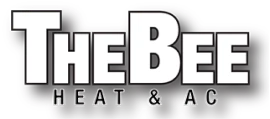A home’s structure must include insulation, which is crucial for preserving indoor comfort, maximizing energy effectiveness, and lowering energy costs. Unfortunately, a lot of people don’t know how well-insulated their homes are, which results in energy waste and greater energy expenses. Whether you’re asking “How can I know if my home is sufficiently insulated?,” this article offers a thorough explanation on the signs and methods for determining your home’s insulation level.
On This Article
hide
1)
How to measure the amount of insulation in your house
1.1)
Excessive energy costs:
1.2)
Drafts:
1.3)
Ice dams:
2)
Make a visual assessment
3)
Hire a specialist
4)
Home Insulation FAQs
5)
Conclusion
How to measure the amount of insulation in your house
There are a number of indicators that your home may not be well insulated. The following are some of the most typical warning signs you should watch out for:
Excessive energy costs:
Consistently high energy costs might be a sign that your house is inadequately insulated. This is due to the fact that a home with good insulation uses less energy to maintain a comfortable temperature, which lowers energy expenditures.
Rooms that are regularly cooler than others might be an indication that your home’s insulation needs to be improved. This is especially true if your home’s outer walls are where the cooler rooms are situated.
Drafts:
If you see drafts coming from your home’s windows, doors, or other locations, your insulation may not be functioning correctly.
Inadequate insulation may be the cause of excessive moisture, which can result in the formation of mold and structural damage. It’s crucial to take immediate action if your house exhibits any indications of wetness.
Ice dams:
If you notice ice dams developing on your roof during the winter, your home’s insulation may not be sufficient. When heat from your home seeps into your attic and melts the snow on your roof, ice dams start to develop. The water then freezes again along your roof’s edge, creating a dam.
You can follow these methods to assess your home’s insulation level if you’ve decided that it might not be sufficiently insulated:
Make a visual assessment
Conducting a visual assessment is the first step in figuring out how well-insulated your home is. Look for any indications of damage or missing insulation in your basement and attic. Pay particular attention to regions adjacent to windows and doors since these are frequent locations where poor insulation may exist.
Utilize a thermal camera: By identifying any regions of heat leakage, a thermal imaging camera may assist you in assessing your home’s insulation quality. You may use the camera to see where your house loses heat so you can decide where you need to install insulation.
Hire a specialist
You may hire a specialist to examine the insulation in your home if you don’t feel comfortable utilizing a thermal imaging camera or undertaking a visual assessment. An expert can accurately examine your home’s insulation level and make any required modifications recommendations.
Home Insulation FAQs
How much insulation is required for my home?
The type of heating and cooling system you have, the temperature, and the age of your property will all have an impact on how much insulation your home needs. You might get assistance from an expert in figuring out how much insulation your house requires.
What insulation types are best for my house?
Insulation comes in a variety of forms, including fiberglass, cellulose, and spray foam. The temperature, the kind of heating and cooling system you have, and the age of your house will all affect the optimum sort of insulation for your home. Based on your unique requirements, a specialist may assist you in choosing the finest type of insulation for your home.
How much would adding insulation to my home cost?
The type of insulation you select, the size of your property, and the installation’s intricacy will all affect the price of adding insulation to your home. A home’s insulation upgrade typically costs between $1,500 and $3,000.
Is hiring a professional required or am I able to install insulation on my own?
It is advised to engage a professional to install insulation because it may be a difficult and risky job. A professional can install insulation correctly and guarantee that it is done so safely and effectively since they have the knowledge and tools necessary.
Conclusion
Establishing your home’s insulation level is crucial for preserving interior comfort, increasing energy efficiency, and lowering energy costs. When determining if your home is adequately insulated, look out for things like high energy costs, cold areas, drafts, excessive dampness, and ice dams. You can use a thermal imaging camera, a visual assessment, or a professional to assess the degree of insulation in your home. To make sure that your home is adequately insulated and energy efficient, it is advised to fix any insulation concerns as soon as possible.

